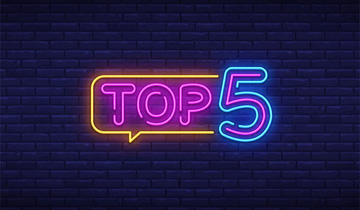8 min read
7 tips before buying electric underfloor heating
If you are in the market for an electric underfloor heating system for your next home renovation, then you have landed in the perfect place. We’ve...
4 min read
 Chris Hedges
:
Dec 14, 2023
Chris Hedges
:
Dec 14, 2023

The UK must reach its net zero goal for 2050, and in the construction sector that requires a 68% reduction of carbon emissions by 2030.
Last year we surveyed construction industry professionals to understand their attitudes towards decarbonisation and the solutions needed to get there. Recognising the importance of the next six years en route to the UK’s net zero goal, we re-surveyed construction industry professionals to see what’s changed.
Our headline findings are that decarbonisation is a commercial opportunity and smart heating controls and direct electric heating are key technologies in the eyes of construction sector professionals.
Over the last year there’s been significant growth in the understanding of the need to decarbonise and with it a greater appreciation of the commercial opportunity it represents.
In 2022, only 55% of respondents agreed that the sector understands that it’s essential to decarbonise buildings to meet net zero goals. In 2023, that figure rose to 81% of respondents.
The biggest challenge by far is retrofitting buildings. Last year 62% agreed it was the biggest challenge, now 81% agree.
The increase in understanding and the need for retrofitting seems to have sparked something in construction professionals. In 2022, 64% of respondents said that decarbonisation of building stock is actually a commercial opportunity for growth. That represented a significant portion of the sector, however in 2023 there’s been massive growth in the positive outlook of respondents. In 2023, 87% of respondents think that decarbonising UK building stock is a “huge” commercial opportunity.
If you don’t understand something, it’s hard to see where money can be made. Once you’ve understood it, the commercial possibilities are much clearer.
When it comes to the economy and the UK’s progress, the dials are basically unchanged. Only 4% more people think it will cost the economy billions each year, and 3% think progress has been made. This suggests that large swathes of the sector have yet been able to capitalise on the commercial opportunity they now recognise. To do so, the right technologies are needed.

More people have begun to see the importance of decarbonisation and the opportunity for commercial growth it represents. This has caused an across-the-board surge in how important construction sector professionals take different solutions to be.
There’s been no real change when it comes to the need for the efficiency of insulation. Last year 80% of people put it in the top two most important, now 78% still consider it important.
However, low carbon heating, microgeneration, reduced embodied carbon, and offsetting emissions have all seen massive increases in the number of people placing them as the top two most important technologies.
The need for low carbon heating has tripled in popularity since 2022: 75% people now place it in the top two most important methods for decarbonisation. This is effectively as important as efficient insulation in the eyes of construction professionals.
"Construction professionals now see low carbon heating as
important as improving efficiency through better insulation."
Microgeneration, e.g. rooftop solar, has doubled to 60% of respondents’ top two, while reducing embodied carbon has grown from 27% to 47%. Lastly, offsetting emissions was only seen as the top two most important by 13% of people last year, now 38% think it’s in the top two and those saying it’s the least important have almost halved, from 59% to 31%.

Low carbon heating is seen as equally important as efficient insulation. The question is what forms of low carbon heating does the construction sector need? Heat pumps are seen as offering the greatest impact. Smart heating controls (such as intelligent thermostats) and direct electric heating (such as electric underfloor heating or panels) come in second and third place, and hydrogen has plummeted.
Last year we did not ask respondents to rank their preferred ways of decarbonising heat. But this year we did, and the results shed some light on the direction the sector may take.
The varied nature of UK building stock is something we must appreciate. Different technologies are suitable for different environments. But, to get an idea of the big picture, we asked construction professionals: “Which technology can have the greatest impact across all building stock over the next five years?”
The results:
First: Heat pumps
Second: Smart heating controls
Third: Direct electric heating
Joint fourth: Hydrogen (replacing gas) and District Heat Networks.
From offices to apartments, the ability to intelligently control the direct electric heating solutions deployed could have the biggest impact over the coming years.
One of the biggest changes has been the apparent suitability of hydrogen to replace gas boilers. It has been documented that hydrogen is best used for industrial uses, such as shipping or manufacturing steel. The message that it’s not appropriate for building heat has gotten through. Last year 58% of respondents thought the use of hydrogen boilers was at least “feasible”, now only 25% think it is.

The future certainly looks electric. Electric heating, particularly direct electric heating, is a preferred technology for many. Construction sector professionals believe that project specifications will start to reflect this in 2024.
We asked respondents whether they agree or disagree that “Price will continue to be the most dominant factor when specifying products for projects” and “The number of projects with electric heating specified will increase.” Exactly 69% agree with both: price will dominate but electric heating specs will increase.
That’s the big picture, but if we drill down into respondents’ comments, we can see that the growth in renewables is important to the future of direct electric heating:
“Electric heating has always been shunned due to costs. But as more energy companies build wind farms etc. more awareness in the potential reduced cost is starting to interest people.”
“Without doubt, electrical energy will become cheaper as sustainable energy is produced and is a lot easier and cheaper, with typically little ongoing maintenance.”
“We are finding with the new carbon factors that electric is now viable particularly if partnered with PV.”
The outlook for electric is clear.
People’s understanding of the need of decarbonisation has grown, coupled with an awareness for the commercial opportunity it represents. Electric heating is seen as a viable option. Although prices are still higher, if they fall as more renewables come online, they could easily become the second most popular option after heat pumps.

8 min read
If you are in the market for an electric underfloor heating system for your next home renovation, then you have landed in the perfect place. We’ve...

4 min read
Launched in the latter part of 2022, the report ‘Working towards Net Zero’ sheds light on the UK construction industry’s attitudes toward direct...

18 min read
After the success of our ‘The top 5 electric underfloor heating brands for 2022?’ blog, we thought it would only be right to update it for 2023 and...